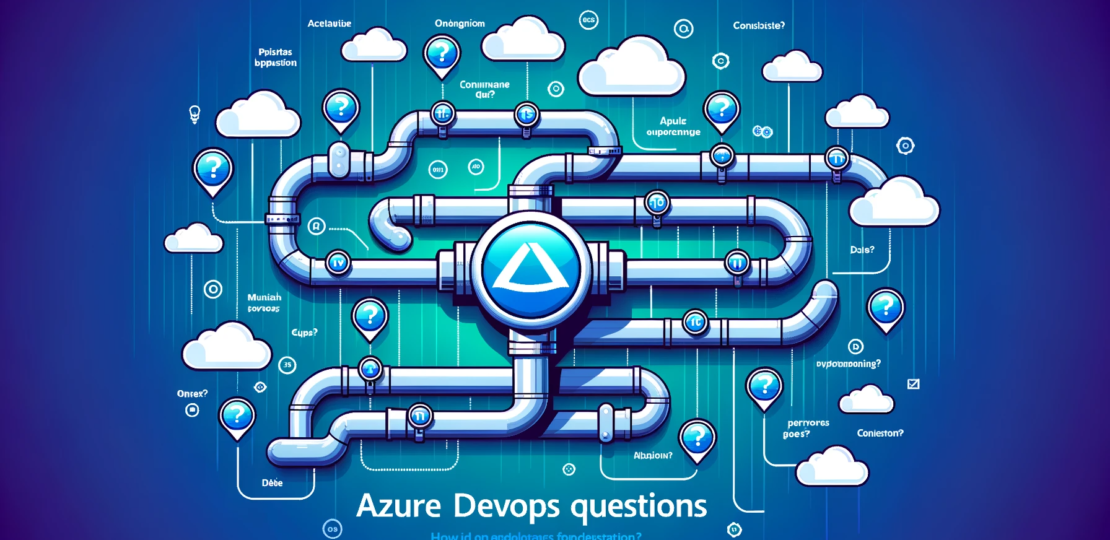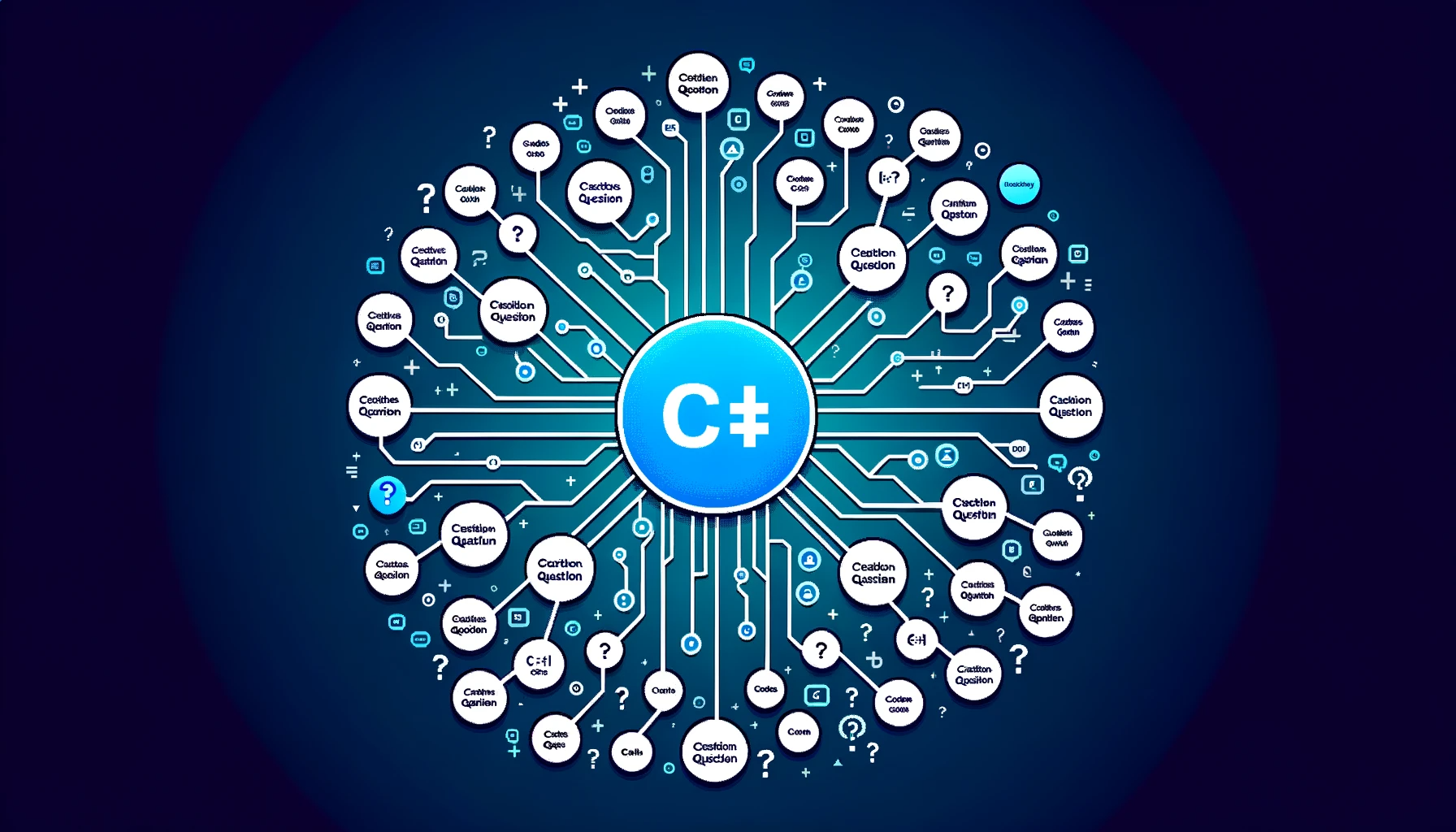
- Q: What is the difference between Azure DevOps and Azure DevOps Server?
A: Azure DevOps is a cloud service, while Azure DevOps Server is a self-hosted version that you can run on your own infrastructure. - Q: What is a build agent in Azure DevOps?
A: A build agent is an installable software that runs one build or deployment job at a time. - Q: How can you manage configurations in Azure Pipelines?
A: You can manage configurations using variables, variable groups, and stages in the pipeline YAML file. - Q: How would you set up a CI/CD pipeline for a Python application in Azure DevOps?
A: You would use Azure Pipelines, defining the build and test steps in the build pipeline and the deployment steps in the release pipeline. Python is natively supported in Azure Pipelines. - Q: How do you handle rollback in Azure DevOps pipelines?
A: You can handle rollback by creating a separate pipeline or job that deploys a previous working version of the application when an error occurs. - Q: What is the Azure Pipelines agent job in YAML?
A: An agent job is a collection of steps that run sequentially on the same agent. In YAML, an agent job is defined under thejobskeyword with a list ofsteps. - Q: How can you use the Azure CLI in Azure Pipelines?
A: You can use the Azure CLI in Azure Pipelines by adding a task withtask: AzureCLI@2in your YAML file. - Q: How do you run multiple jobs in parallel in Azure Pipelines?
A: You can run multiple jobs in parallel by defining multiple jobs in your pipeline YAML and using thestrategykeyword for parallel execution. - Q: How do you store secrets for Azure Pipelines?
A: You can store secrets in Azure Pipelines using variable groups. The secrets are encrypted and can be accessed securely in your pipeline. - Q: How do you set up branch policies in Azure Repos?
A: You can set up branch policies in Azure Repos in the Branch Policies settings. Policies include requiring pull request reviews, checking for linked work items, enforcing comment resolution, and running build validation. - Q: What are pipeline artifacts in Azure Pipelines?
A: Pipeline artifacts are the files produced by your pipeline that are stored and versioned in Azure Pipelines. They are used to share files between jobs in a pipeline or between pipelines. - Q: How do you use Docker in Azure Pipelines?
A: You can use Docker in Azure Pipelines by using the Docker tasks to build, push, or run Docker images, or to deploy a Docker stack. - Q: How do you manage dependencies in Azure DevOps?
A: You can manage dependencies in Azure DevOps using Azure Artifacts, which is a package management solution that allows you to create, host, manage, and share packages. - Q: How do you use PowerShell scripts in Azure Pipelines?
A: You can use PowerShell scripts in Azure Pipelines by adding a PowerShell task in your YAML file and writing the script inline or pointing to a script path. - Q: How do you handle deployment approvals in Azure Pipelines?
A: You can handle deployment approvals in Azure Pipelines by setting up pre-deployment and post-deployment approvals in your release pipeline. - Q: What is Azure Monitor and how does it integrate with Azure DevOps?
A: Azure Monitor is a service in Azure that provides performance and availability monitoring for your applications and services. It can be integrated with Azure DevOps to provide application insights, which can be useful for troubleshooting and optimizing your applications. - Q: What is a service hook in Azure DevOps?
A: A service hook in Azure DevOps is a way to perform tasks on other services when events happen in your project, such as a new commit or a completed build. - Q: How do you use a private agent in Azure Pipelines?
A: You can use a private agent in Azure Pipelines by installing the agent software on your own infrastructure and registering the agent with Azure DevOps. You can then target the private agent in your pipeline YAML. - Q: How do you integrate Azure DevOps with Jira?
A: You can integrate Azure DevOps with Jira using the Azure DevOps and Jira Cloud integration available in the Atlassian marketplace. This allows you to sync issues, work items, comments, and other data between the two platforms. - Q: What is test case management in Azure DevOps?
A: Test case management in Azure DevOps is handled by Azure Test Plans, which allows you to plan, track, and assess your testing efforts. - Q: How do you deploy a Node.js application with Azure DevOps?
A: You can deploy a Node.js application with Azure DevOps by creating a build pipeline to build and package your application, and a release pipeline to deploy your application to your target environment. - Q: How do you use npm packages in Azure DevOps?
A: You can use npm packages in Azure DevOps by hosting them in Azure Artifacts, which can serve as a private npm registry. You can then use thenpm installcommand in your pipelines to install the packages. - Q: How do you create a custom task for Azure Pipelines?
A: You can create a custom task for Azure Pipelines by creating a Node.js or PowerShell script that implements the task functionality, and packaging it into an extension for Azure DevOps. - Q: What is a security group in Azure DevOps?
A: A security group in Azure DevOps is a group of users that you can manage as a single unit. You can assign permissions to a security group to control access to resources in Azure DevOps. - Q: How do you integrate Azure DevOps with GitHub?
A: You can integrate Azure DevOps with GitHub by connecting your GitHub repository as the source repository in your Azure Pipelines. You can also use service hooks to trigger actions in Azure DevOps when events happen in your GitHub repository. - Q: How do you use YAML multi-stage pipelines in Azure DevOps?
A: You can use YAML multi-stage pipelines in Azure DevOps by defining multiple stages in your pipeline YAML. Each stage can have one or more jobs, and each job can have one or more steps. - Q: How do you use deployment slots in Azure Pipelines?
A: You can use deployment slots in Azure Pipelines by creating a task in your release pipeline that deploys your application to a specific slot in Azure App Service. - Q: How do you use Azure Functions in Azure DevOps?
A: You can use Azure Functions in Azure DevOps by creating a build pipeline to build and package your function app, and a release pipeline to deploy your function app to Azure Functions. - Q: How do you handle environment variables in Azure Pipelines?
A: You can handle environment variables in Azure Pipelines by defining them in your pipeline YAML or in the pipeline settings. You can then access them in your pipeline tasks using the syntax$(VariableName). - Q: How do you trigger a pipeline in Azure Pipelines?
A: You can trigger a pipeline in Azure Pipelines by pushing a commit to your source repository, manually running the pipeline from the Azure DevOps portal, or using the REST API to start a run. - Q: How do you use Azure Key Vault in Azure Pipelines?
A: You can use Azure Key Vault in Azure Pipelines by creating a service connection to your Key Vault and adding a task in your pipeline to fetch the secrets. - Q: How do you use query-based boards in Azure DevOps?
A: You can use query-based boards in Azure DevOps by creating a query that returns a set of work items, and then creating a board based on that query. - Q: What is the Delivery Plan extension in Azure DevOps?
A: The Delivery Plan extension in Azure DevOps is a tool that provides a calendar view of your work items, helping you track the progress of your work across teams and projects. - Q: How do you use extensions in Azure DevOps?
A: You can use extensions in Azure DevOps by installing them from the Azure DevOps Marketplace. Extensions can add new capabilities to your projects, such as custom tasks, dashboards, and integrations with other tools. - Q: How do you use feature flags in Azure DevOps?
A: You can use feature flags in Azure DevOps by implementing them in your application code, and managing them with a feature management platform like Azure App Configuration. - Q: How do you use the REST API in Azure DevOps?
A: You can use the REST API in Azure DevOps to interact with your Azure DevOps services programmatically. The API allows you to perform operations like creating a work item, starting a pipeline run, and getting the list of commits in a repository. - Q: How do you use the Azure DevOps CLI?
A: You can use the Azure DevOps CLI by installing it on your machine, and using theaz devopscommand to interact with your Azure DevOps services. - Q: How do you use Azure Boards with Scrum?
A: You can use Azure Boards with Scrum by using the Scrum process template, which provides work item types like Product Backlog Item, Sprint, and Impediment. - Q: How do you use the Test & Feedback extension in Azure DevOps?
A: You can use the Test & Feedback extension in Azure DevOps to capture feedback, take screenshots, and create bug work items directly from your web browser. - Q: How do you use Git LFS with Azure Repos?
A: You can use Git LFS with Azure Repos by installing the Git LFS client on your machine, and using thegit lfscommand to track large files in your Git repository. - Q: How do you use pull request auto-complete in Azure Repos?
A: You can use pull request auto-complete in Azure Repos by setting the Auto-Complete option when creating a pull request. This will automatically complete the pull request when all branch policies are met. - Q: How do you set up Continuous Monitoring in Azure DevOps?
A: You can set up Continuous Monitoring in Azure DevOps by integrating with Azure Monitor and Application Insights, which can provide detailed telemetry, alerts, and logs for your applications. - Q: How do you manage technical debt in Azure DevOps?
A: You can manage technical debt in Azure DevOps by using work items to track debt items, and by using code analysis tools in your pipelines to detect and track code smells and violations. - Q: How do you manage user roles in Azure DevOps?
A: You can manage user roles in Azure DevOps by assigning users to security groups and setting permissions at the project, repository, or area path level. - Q: How do you integrate Azure DevOps with Slack?
A: You can integrate Azure DevOps with Slack by installing the Azure Pipelines app for Slack, which allows you to receive notifications and interact with your pipelines directly from Slack. - Q: How do you use release gates in Azure Pipelines?
A: You can use release gates in Azure Pipelines by adding them in your release pipeline. Gates can pause the pipeline and run automated health checks before or after a stage. - Q: How do you use Azure DevTest Labs with Azure DevOps?
A: You can use Azure DevTest Labs with Azure DevOps by creating a service connection to your lab, and adding tasks in your pipeline to create, configure, or delete lab resources. - Q: How do you manage test plans in Azure DevOps?
A: You can manage test plans in Azure DevOps by using Azure Test Plans, which allows you to create, manage, and run manual and automated tests. - Q: How do you use Azure DevOps with Visual Studio Code?
A: You can use Azure DevOps with Visual Studio Code by installing the Azure Repos extension, which allows you to clone, pull, push, and manage your Git repositories in Azure Repos. - Q: How do you use task groups in Azure Pipelines?
A: You can use task groups in Azure Pipelines by creating a task group in the library, adding tasks to it, and then using the task group in your pipelines.
RELATED POSTS
View all


